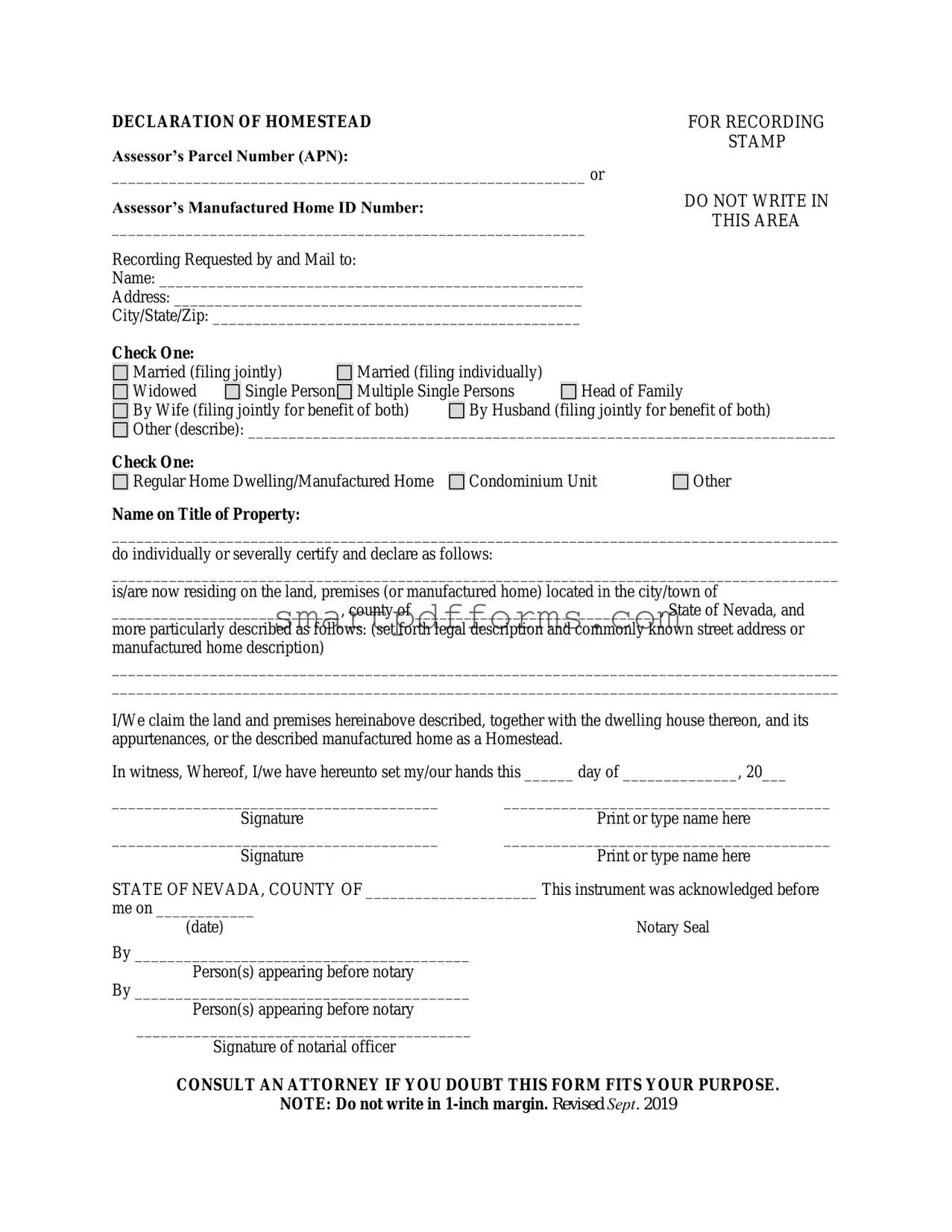DECLARATION OF HOMESTEAD
Assessor’s Parcel Number (APN):
__________________________________________________________ or
Assessor’s Manufactured Home ID Number:
__________________________________________________________
Recording Requested by and Mail to:
Name: ____________________________________________________
Address: __________________________________________________
City/State/Zip: _____________________________________________
FOR RECORDING
STAMP
DO NOT WRITE IN
THIS AREA
Check One: |
|
|
|
|
|
|
|
|
|
Married (filing jointly) |
|
Married (filing individually) |
|
|
|
Widowed |
|
Single Person |
|
Multiple Single Persons |
|
Head of Family |
|
By Wife (filing jointly for benefit of both) |
|
By Husband (filing jointly for benefit of both) |
 Other (describe): ________________________________________________________________________
Other (describe): ________________________________________________________________________
Check One: |
|
|
Regular Home Dwelling/Manufactured Home |
Condominium Unit |
Other |
Name on Title of Property:
_________________________________________________________________________________________
do individually or severally certify and declare as follows:
_________________________________________________________________________________________
is/are now residing on the land, premises (or manufactured home) located in the city/town of
____________________________, county of ______________________________, State of Nevada, and
more particularly described as follows: (set forth legal description and commonly known street address or manufactured home description)
_________________________________________________________________________________________
_________________________________________________________________________________________
I/We claim the land and premises hereinabove described, together with the dwelling house thereon, and its appurtenances, or the described manufactured home as a Homestead.
In witness, Whereof, I/we have hereunto set my/our hands this ______ day of ______________, 20___
________________________________________ |
________________________________________ |
Signature |
Print or type name here |
________________________________________ |
________________________________________ |
Signature |
Print or type name here |
STATE OF NEVADA, COUNTY OF _____________________ This instrument was acknowledged before
me on ____________
(date)
By _________________________________________
Person(s) appearing before notary
By _________________________________________
Person(s) appearing before notary
_________________________________________
Signature of notarial officer
CONSULT AN ATTORNEY IF YOU DOUBT THIS FORM FITS YOUR PURPOSE.
NOTE: Do not write in 1-inch margin. Revised Sept. 2019


 Other (describe): ________________________________________________________________________
Other (describe): ________________________________________________________________________